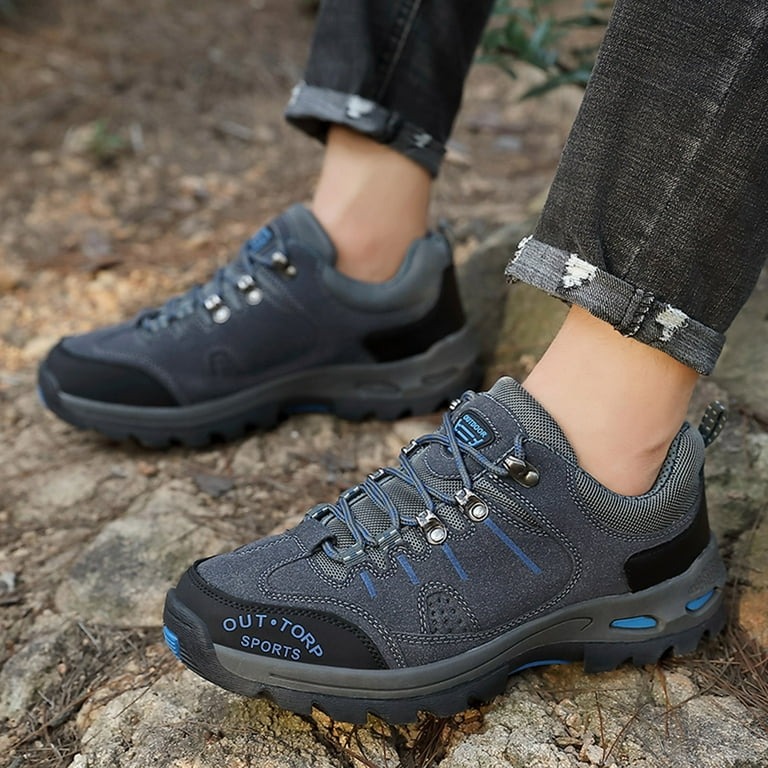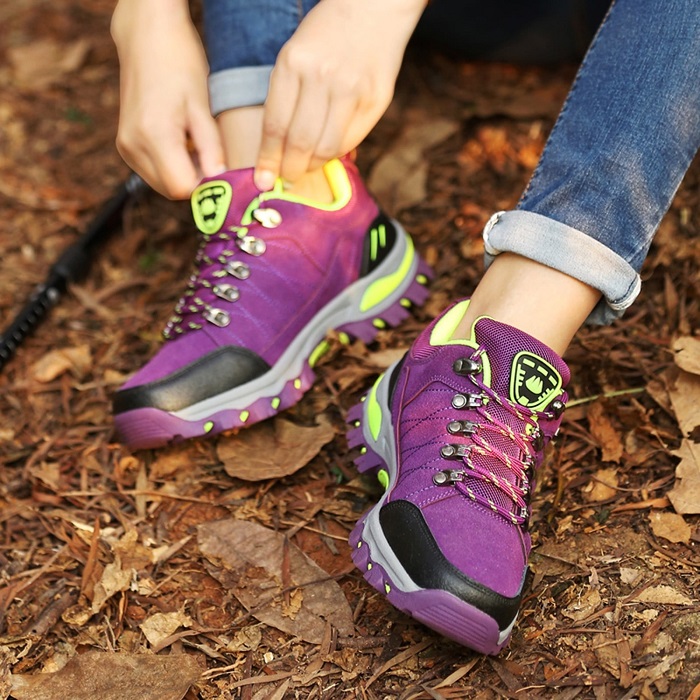Navigating the vast selection of outdoor sports shoes can be daunting. In this guide, you’ll learn how to choose wisely. Start by assessing the shoe’s purpose. Determine the type of terrain you’ll tackle. Will you be heading onto rocky trails or smooth pathways? Consider the climate. Are waterproof features a must for your adventures? Heed your personal preferences for cushioning and support. Know that the right shoes can enhance your outdoor experience significantly. They provide grip, protect your feet, and can even improve performance. Furthermore, using shoes unfit for the outdoor activity can lead to injuries. We’ll guide you through the process, from understanding the categories to the key features to look for.
Identifying Your Outdoor Activity Needs
Before diving into the array of outdoor sports shoes, it’s crucial to understand your specific activity needs. This awareness will guide your purchase and ensure you get the most suitable footwear.
- Identify the Activity: Are you planning to hike, trail run, or engage in another outdoor sport? Different activities require varying levels of support, traction, and durability.
- Consider the Terrain: Will you be navigating rocky mountain trails or strolling on flat, even surfaces? Shoes designed for rough terrains offer additional protection and grip.
- Assess the Weather Conditions: A key factor in selecting shoes is the climate you’ll be in. Will you face rain, snow, or streams? Waterproof or water-resistant features might be necessary.
- Duration and Frequency of the Activity: Think about how long and how often you will participate in the outdoor sport. Regular, lengthy outings may demand higher quality and more durable footwear.
- Look at Your Past Experiences: Reflect on previous outdoor shoe experiences. What worked well? What gave you discomfort or didn’t perform as expected? Learning from the past can steer your new choice.
By reflecting on these points, you’re preparing to choose outdoor sports shoes that align perfectly with the demands of your activities. This careful consideration will save you time and enhance your overall outdoor experience.
Understanding Different Types of Outdoor Sports Shoes

When you’re gearing up for the outdoors, knowing the different types of outdoor sports shoes is crucial. Different designs cater to specific activities. Here’s a breakdown to help you grasp the differences:
- Hiking Boots: These are sturdy, high-cut boots that offer ankle support. They’re best for rugged terrains.
- Trail Running Shoes: These are lightweight and have more flexible soles, designed for speed and agility on uneven paths.
- Approach Shoes: Ideal for rock climbers, these have sticky soles for grip on rocks.
- Walking Shoes: For casual treks, they provide comfort and support on well-established trails.
- Mountain Biking Shoes: These have stiff soles for pedal power and often, cleats for grip.
- Water Shoes: Quick-drying and with a good grip for aquatic adventures or crossing streams.
Understand that each type of shoe supports the foot differently. Look at the sole patterns, materials, and shoe construction. Consider how these features match the demands of your chosen activity. For example, deeper lugs on soles enhance traction for muddy terrains while a tight weave on upper materials offers better protection against debris. By grasping the specifics, you’ll choose the right outdoor sports shoes with ease.
Key Features to Look for in Outdoor Sports Shoes
When selecting outdoor sports shoes, certain features are vital for comfort and safety. Here’s what to keep an eye on:
- Sole Type and Tread Pattern: The sole is key for traction. Look for deep lugs if you’re on muddy ground. A rugged tread pattern aids grip in rough terrain.
- Cushioning and Support: Good cushioning in the midsole can absorb shock, reducing fatigue and injury risk. For trekking, a firm arch support is also essential.
- Material and Breathability: Materials should fit the climate. Choose breathable fabrics for warm conditions. Opt for waterproof or water-resistant for wet climates.
- Toe Protection: A reinforced toe cap protects against rocks and roots. It’s crucial when hiking or trail running.
- Weight: Heavier boots provide more support for backpacking. Lighter shoes are better for quick movements in trail running.
- Ankle Support: High-cut shoes offer more support and protection for the ankles. This is important to prevent twists and sprains.
- Fit and Comfort: Make sure the shoes fit well. Try them at the end of the day when feet are larger. Ensure there’s wiggle room for the toes but snug enough to avoid blisters.
By focusing on these key features, you’ll be more likely to find outdoor sports shoes that suit your needs and enhance your performance. Ensure the outdoor sports shoes you choose incorporate these elements to support your adventures effectively.
How to Find the Perfect Fit
Finding the perfect fit for outdoor sports shoes is key to comfort and performance. Here’s what to consider to ensure you get the right fit:
- Measure Your Feet: Feet can change over time, so measure them before buying new shoes. Do this at the end of the day when feet are their largest.
- Socks Matter: Wear the socks you’ll use during your outdoor activities when trying on shoes. They can affect the fit.
- Check the Space: You need about a thumb’s width of space at the toe to prevent your toes from hitting the front.
- The Right Width: Make sure the shoes are not too tight or loose on the sides. Your feet should feel secure without any pinch.
- Walk Around: Test shoes by walking around. Notice any slipping or discomfort. Shoes should feel comfortable right away.
- Consider Insoles: Sometimes the right insole can improve the fit. Arch support insoles can provide extra comfort.
- Lacing Techniques: Different lacing methods can change how a shoe fits. Experiment to find the best hold for your feet.
By taking these steps, you’ll be closer to finding outdoor sports shoes that fit perfectly. Remember, the right fit can enhance your outdoor experience and help prevent injury. Keep these tips in mind, and take your time testing different shoes until you find the right pair.
The Importance of Quality and Durability

When choosing outdoor sports shoes, quality and durability are key. Shoes of high quality last longer. They withstand rugged conditions and rough terrain. Here are reasons why you should prioritize these factors:
- Long-Term Use: Durable shoes serve you well over time. They handle the wear and tear of outdoor activities.
- Cost-Effective: Investing in quality footwear saves money. You avoid frequent replacements.
- Better Performance: Quality materials improve your performance. They offer better support and comfort.
- Safety: Durable footwear protects you from injuries. It reduces the risk of tears that could cause accidents.
- Environmental Consideration: Well-made shoes mean less waste. You help the environment by reducing the need for new resources.
Look for shoes made with strong materials. Check for reinforced seams and quality construction. Opt for shoes that have good reviews for longevity. Remember, your outdoor sports shoes are a long-term investment for your activities.
Maintenance Tips for Outdoor Sports Shoes
Once you’ve invested in the right outdoor sports shoes, it’s crucial to maintain them well. Proper care extends their life and ensures they continue to perform. Here are practical tips to keep your shoes in top condition.
- Clean Regularly: After each use, remove dirt and debris. Use a brush or cloth to clean the soles and uppers.
- Dry Them Out: If your shoes get wet, let them air dry away from direct heat. Stuff them with newspaper to absorb moisture.
- Condition Leather: For leather shoes, apply conditioner to keep the material supple and prevent cracking.
- Store Properly: Keep your shoes in a cool, dry place. Avoid leaving them in hot cars or direct sunlight.
- Rotate Shoes: If you’re frequently active, rotate between multiple pairs. This gives them time to recover their shape.
- Avoid Washing Machine: Don’t toss them in a washing machine. It can damage the materials and structure.
- Replace Insoles: Check insoles regularly for wear and tear. Replace them to maintain comfort and support.
- Check for Wear: Inspect your shoes for signs of excessive wear. Look at soles and seams especially.
- Use Proper Technique: When taking them off, untie laces first. Avoid stepping on the heel which can break it down.
Caring for your outdoor sports shoes goes beyond cleaning. It’s about preserving the shoe’s integrity and functionality. Remember these steps, and you’ll maximize the lifespan of your outdoor footwear.
Top Recommended Outdoor Sports Shoe Brands

After exploring how to choose the right outdoor sports shoes for your activities, it’s time to look at top brands that are renowned for their quality and durability. Here are some of the most recommended brands that cater to various outdoor sports needs:
- Salomon: Known for their trail running and hiking footwear, Salomon shoes offer great support and durability.
- Merrell: Merrell excels in creating comfortable hiking boots and shoes for all terrains with good cushioning.
- The North Face: A brand that stands for adventure and provides sturdy footwear for mountain sports and snow activities.
- Keen: Ideal for those who love water activities or hiking, Keen shoes offer versatility with a focus on toe protection.
- Adidas Terrex: Adidas Terrex shoes are designed for outdoor sports enthusiasts who value lightweight and agile footwear.
- Columbia: Great for various outdoor pursuits, Columbia shoes are known for their waterproof capabilities and good traction.
- La Sportiva: Best for rock climbers and mountaineers, La Sportiva offers specialized shoes for great grip on rocks.
- Scarpa: Known for their high-quality mountain boots, Scarpa provides excellent options for challenging alpine terrains.
Choosing a brand that aligns with your outdoor activities, you can trust that your investment will enhance your performance, comfort, and safety.



